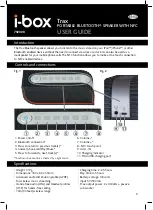
18 DTMF
FUNC (K)/Ver. 1.01
Confidential
71
18.3.6 Transpond (Conventional)
This function allows the caller to confirm that the receiving
party has received the individual call code.
Transceiver operation when the receiving party receives
the code can be configured.
Transpond can be configured by using KPG-101D.
(Refer to FPRG 6.10.2 Decode Tab - Transpond
(Conventional).)
Note:
Transpond is available in Conventional Group.
18.3.7 Code (Trunking) (TK-3173 only)
The standby DTMF code for receiving an individual call in
Trunking System can be configured.
The transceiver executes the operation configured for
Transpond and Alert Tone if the DTMF code matches.
The transceiver can communicate only with LTR ID.
Code can be configured by using KPG-101D. (Refer to
FPRG 6.10.2 Decode Tab - Code (Trunking).)
Note:
Code (Trunking) is available in Trunking System.
18.3.8 Transpond/ Alert Tone
(Trunking) (TK-3173 only)
The transceiver executes Transpond/ Alert Tone if the
code matches in Trunking System. If the code matches,
the transceiver executes the operation configured for
Transpond and Alert Tone.
Transpond and Alert Tone can be configured by using
KPG-101D. Below is a list of configuration items for Alert
Tone and Transpond.
Table 18-4 Transpond/ Alert Tone Operation
Note:
The transceiver emits the alert tone after transponding when
both Transpond and Alert Tone are configured at the same time.
Alert Tone is delayed if the transmission of the Transpond is
delayed when the channel is being used while Clear To
Transpond is enabled in the Conventional Group.
The transceiver stops emitting the alert tone if a key is pressed
while the transceiver intermittently emits the alert tone when
“Infinite” is selected for
Special Alert Tone
window > >
Cycle
edit box. The received tone is emitted first if the transceiver
intermittently emits the alert tone.
The matching status of DTMF is reset in the following conditions:
Table 18-5 Conditions for Resetting DTMF
Matching Status
•
The status of Transpond is reset in the following
conditions:
Table 18-6 Conditions for Resetting Transpond
Configuration
Operation
Off
Transceiver does not respond.
Alert
The transceiver multiplexes the Transpond
Tone and transmits the tone.
ID Code
The transceiver multiplexes the ID Code
configured for the receive channel and
sends the code.
Transpond Code
The transceiver multiplexes the Autodial
Memory 1 and sends the code.
Ringing Tone
The transceiver multiplexes the Ringing
tone and transmits the tone.
Configuration
Operation
Alert Tone
The transceiver emits the configured Alert
Tone.
Transpond
The transceiver transponds, multiplexes
the Transpond tone and transmits the
tone.
Operation
Condition
Pressing a
key
If one of the following keys is pressed:
•
Monitor
key
•
Monitor Momentary
key
•
Squelch Off
key
•
Squelch Off Momentary
key
•
Zone Up
key
•
Zone Down
key
•
Zone Up/Down
key
•
CH/GID Up
key
•
CH/GID Down
key
•
CH/GID Up/Down
key
•
Scan
key
•
Home Channel
key
•
Direct CH/GID 1
to
Direct CH/GID 4
keys
Expiration of
Timers
When the Auto Reset Timer expires.
Operation
Condition
Pressing a
key
If one of the following keys is pressed:
•
Monitor
key
•
Monitor Momentary
key
•
Squelch Off
key
•
Squelch Off Momentary
key
•
Zone Up
key
•
Zone Down
key
•
Zone Up/Down
key
•
CH/GID Up
key
•
CH/GID Down
key
•
CH/GID Up/Down
key
•
Scan
key
•
Home Channel
key
•
Direct CH/GID 1
to
Direct CH/GID 4
keys
Transmission When the
PTT
switch is pressed to transmit.
















































